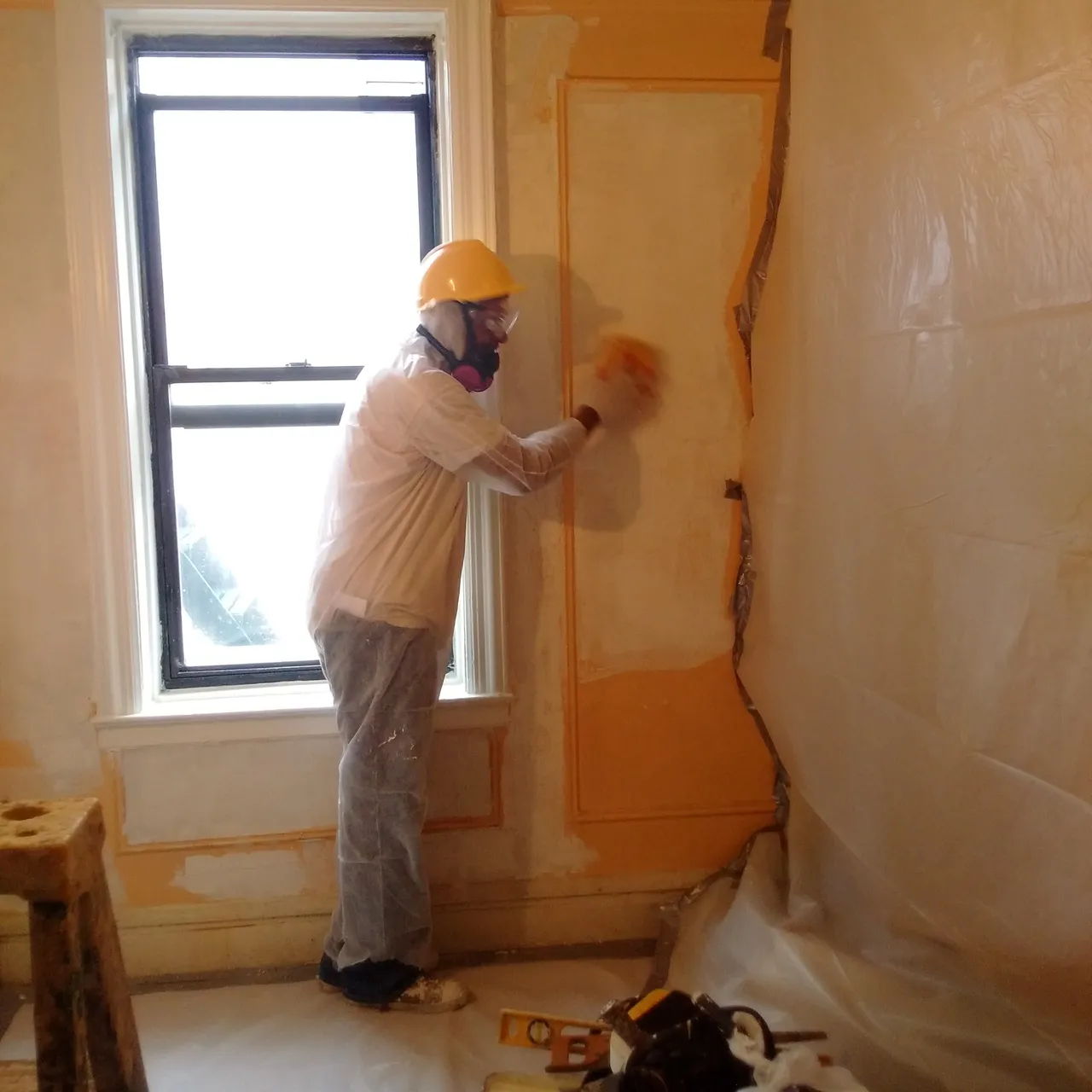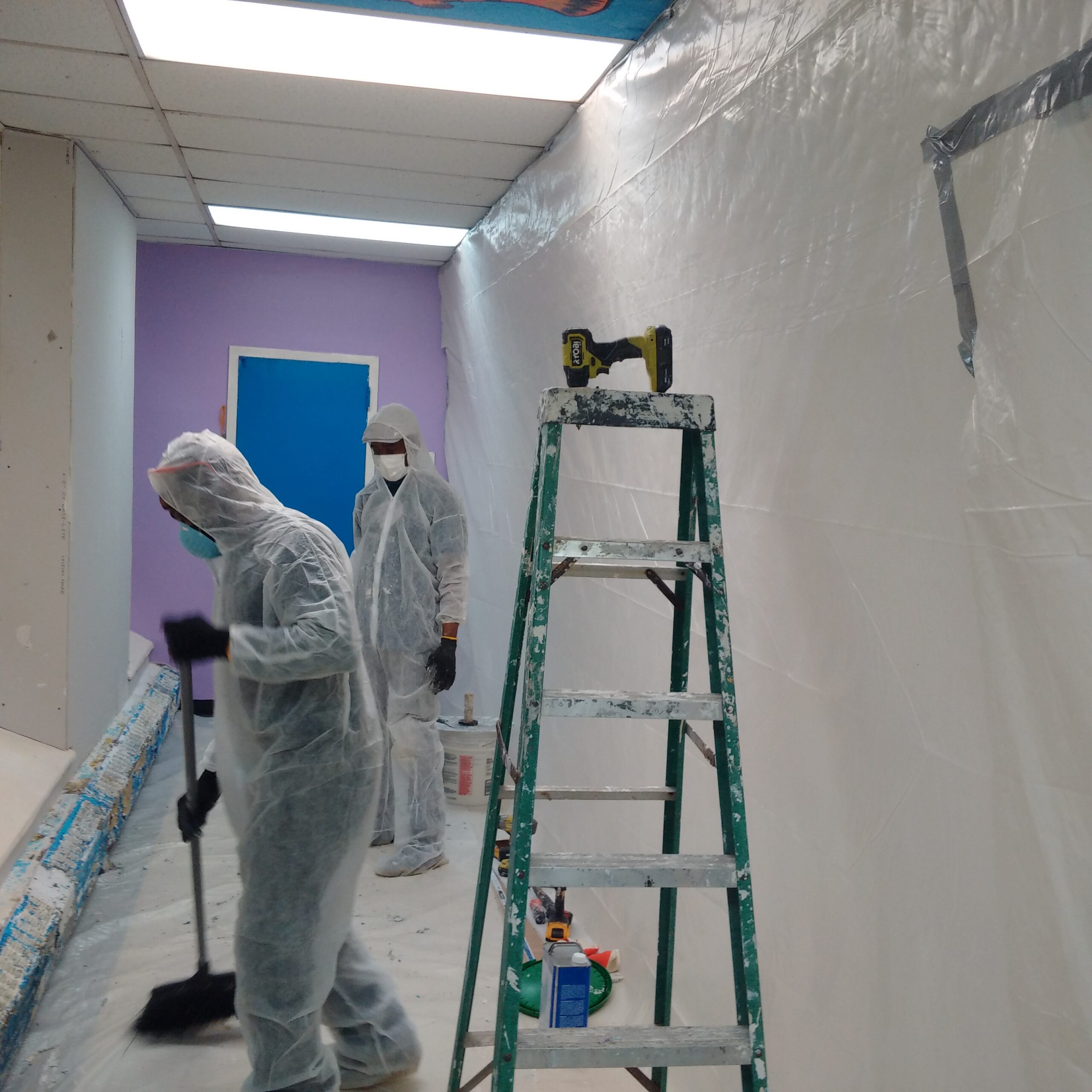Comprehensive Lead Paint Removal Service in NYC-- Certified and Certified
Comprehensive Lead Paint Removal Service in NYC-- Certified and Certified
Blog Article
Step-by-Step Refine for Successful Lead Violation Remediation
Dealing with lead infractions demands a precise and structured approach to make sure both security and governing compliance. The trip starts with the accurate discovery and assessment of contamination sources, using innovative analysis tools. Following this, adherence to government and state policies is paramount to developing a reliable removal strategy. Such a strategy needs to detail the details methods and timelines for activity. The actual remediation calls for knowledgeable employees to apply these strategies while purely following security protocols. What occurs after the remediation is finished? The solution depends on comprehending the crucial post-remediation approaches that ensure lasting security and neighborhood health.

Discovery and Analysis
Detection and assessment are vital actions in the remediation of lead infractions. To ensure a reliable removal process, it is important to carry out a comprehensive assessment of the setting where possible lead exposure exists.
This includes reviewing the level and extent of contamination, as well as recognizing populaces at risk, particularly children and expectant ladies. The collected information must be carefully documented to support the advancement of a reliable remediation method.
Moreover, it is necessary to prioritize areas with the greatest degrees of contamination and those that pose the best health threats. Reliable interaction with stakeholders, including homeowner, citizens, and public health and wellness authorities, is crucial for making sure that all celebrations are notified about the searchings for and the subsequent steps required for remediation. This initial detection and evaluation stage prepares for an effective lead violation remediation procedure.

Legal and Governing Compliance
Navigating the landscape of lawful and regulatory conformity is a pivotal aspect of effective lead infraction removal. Compliance makes sure not only the safety and security of afflicted populations yet additionally the integrity and lawful standing of the organization in charge of remediation. Rules regulating lead contamination are diverse, incorporating government, state, and local legislations. At the federal level, the Epa (EPA) sets stringent standards under the Poisonous Compounds Control Act (TSCA) and the Lead-Based Paint Renovation, Repair Service, and Paint Rule (RRP Guideline)
This entails careful documentation of all removal activities to demonstrate compliance. Failing to stick to these laws can result in extreme charges, including large penalties, legal activity, and reputational damages.
Involving lawful experts focused on environmental regulation can assist in navigating these intricacies. Normal training and certification for all workers associated with the removal procedure are also mandatory to make certain adherence to safety and regulative criteria. By prioritizing lawful and governing compliance, companies can effectively minimize dangers and attain a successful remediation end result.
Preparation the Removal
Properly planning the removal of lead offenses begins with a complete analysis of the infected site. This first evaluation needs to include a comprehensive website examination to identify the level and focus of lead contamination. Comprehensive sampling and laboratory evaluation are extremely important to develop a precise contamination account. This visit the website data-driven method ensures that removal efforts are suitably targeted and reliable.
When the contamination is mapped, a risk assessment ought to be conducted to evaluate prospective health threats to human beings and the environment. Lead Violation Removal in NYC. This assessment should take into consideration aspects such as exposure pathways, populace vulnerability, and eco-friendly impacts. The understandings gathered will form the basis for selecting an appropriate removal method
Subsequently, establishing clear, achievable objectives for the removal job is important. These goals must straighten with regulatory requirements and stakeholder assumptions to ensure compliance and community acceptance. Establishing a comprehensive removal plan that outlines techniques, timelines, and resource allotment will certainly promote an organized strategy to the cleanup process.
Furthermore, it is important to engage with stakeholders early and maintain transparent communication throughout the preparation phase. This consists of informing regional neighborhoods, getting required permits, and coordinating with regulatory agencies to guarantee all legal and procedural needs are satisfied. A well-crafted remediation strategy not just addresses the contamination properly but also constructs trust and participation amongst all parties involved.
Performing the Remediation
With a well-structured removal plan in position, the emphasis moves to the real implementation of the remediation tasks. This stage includes mobilizing the required sources, consisting of experienced workers, customized equipment, and high-quality materials. Begin by clearly delineating duties and responsibilities to make certain accountability and seamless sychronisation amongst group participants.
This includes establishing up containment areas to avoid lead dust and particles from spreading, as well as employing air filtering systems to keep air top quality. Utilize techniques such as wet scuffing, chemical removing, or encapsulation, depending on the extent and place of the contamination.
Throughout the remediation procedure, conduct routine evaluations and air high quality keeping track of to guarantee conformity with regulatory standards. Reliable interaction with stakeholders, consisting of homeowner and residents, is important to maintain them notified of progression and any unexpected advancements. By meticulously complying with these steps, the remediation tasks can be implemented effectively and efficiently, eventually mitigating lead dangers.
Post-Remediation Methods
Post-remediation techniques play an essential role in making sure the long-lasting success of lead infraction remediation initiatives. These techniques his comment is here include recurring tracking, maintenance, and this article community education to stop future lead direct exposure and ensure a risk-free setting.
First, regular tracking is vital. This involves routine testing of the formerly influenced areas to make sure that lead degrees remain within secure limitations. Homeowner must develop a timetable for these tests, ideally in partnership with qualified ecological experts.

Third, educating the community plays a critical duty in sustaining the benefits of removal. Homeowners and property supervisors need to be notified about the risks of lead direct exposure and the very best techniques for preserving a lead-safe atmosphere. Workshops, informative handouts, and community conferences can be effective tools for disseminating this details.
Final Thought
Effective lead violation removal calls for a comprehensive, organized strategy incorporating discovery and evaluation of contamination, adherence to legal and governing requirements, precise planning, and efficient execution of removal initiatives. Post-remediation methods, consisting of continual surveillance and neighborhood education, are necessary to sustain a lead-safe environment. Cooperation with ecological professionals ensures continuous compliance and defense of public health. This systematic procedure highlights the importance of thoroughness and watchfulness in addressing and minimizing lead contamination.
Report this page